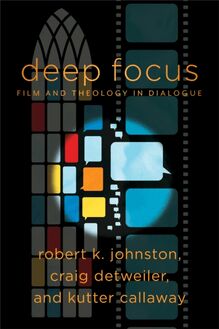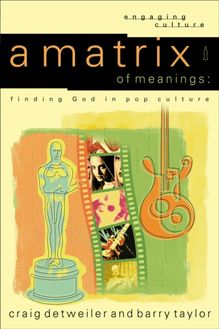-
 Univers
Univers
-
 Ebooks
Ebooks
-
 Livres audio
Livres audio
-
 Presse
Presse
-
 Podcasts
Podcasts
-
 BD
BD
-
 Documents
Documents
-
- Cours
- Révisions
- Ressources pédagogiques
- Sciences de l’éducation
- Manuels scolaires
- Langues
- Travaux de classe
- Annales de BEP
- Etudes supérieures
- Maternelle et primaire
- Fiches de lecture
- Orientation scolaire
- Méthodologie
- Corrigés de devoir
- Annales d’examens et concours
- Annales du bac
- Annales du brevet
- Rapports de stage
La lecture à portée de main
Vous pourrez modifier la taille du texte de cet ouvrage
Découvre YouScribe en t'inscrivant gratuitement
Je m'inscrisDécouvre YouScribe en t'inscrivant gratuitement
Je m'inscrisEn savoir plus
Vous pourrez modifier la taille du texte de cet ouvrage
En savoir plus

Description
Sujets
Informations
| Publié par | Baker Publishing Group |
| Date de parution | 01 novembre 2001 |
| Nombre de lectures | 0 |
| EAN13 | 9781585585465 |
| Langue | English |
Informations légales : prix de location à la page 0,0634€. Cette information est donnée uniquement à titre indicatif conformément à la législation en vigueur.
Extrait
Engaging Culture
W ILLIAM A. D YRNESS
AND R OBERT K. J OHNSTON ,
SERIES EDITORS
The Engaging Culture series is designed to help Christians respond with theological discernment to our contemporary culture. Each volume explores particular cultural expressions, seeking to discover God’s presence in the world and to involve readers in sympathetic dialogue and active discipleship. These books encourage neither an uninformed rejection nor an uncritical embrace of culture, but active engagement informed by theological reflection.
© 2001 by William A. Dyrness
Published by Baker Academic a division of Baker Publishing Group P.O. Box 6287, Grand Rapids, MI 49516-6287 www.bakeracademic.com
Ebook edition created 2013
All rights reserved. No part of this publication may be reproduced, stored in a retrieval system, or transmitted in any form or by any means—for example, electronic, photocopy, recording—without the prior written permission of the publisher. The only exception is brief quotations in printed reviews.
ISBN 978-1-58558-546-5
Library of Congress Cataloging-in-Publication Data is on file at the Library of Congress, Washington, DC.
Unless otherwise indicated, Scripture quotations are from the New Revised Standard Version of the Bible, copyright 1989 by the Division of Christian Education of the National Council of the Churches of Christ in the USA. Used by permission.
Scripture quotations identified NEB are from The New English Bible . Copyright © 1961, 1970, 1989 by The Delegates of Oxford University Press and The Syndics of the Cambridge University Press. Reprinted by permission.
Scripture quotations identified NIV are from are from the Holy Bible, New International Version®. NIV®. Copyright © 1973, 1978, 1984 by Biblica, Inc.™ Used by permission of Zondervan. All rights reserved worldwide. www.zondervan.com
Scripture quotations identified RSV are from the Revised Standard Version of the Bible, copyright 1946, 1952, 1971 by the Division of Christian Education of the National Council of the Churches of Christ in the USA. Used by permission.
contents
Cover
Series Page
Title Page
Copyright Page
List of Illustrations
Preface
Introduction: The Uneasy Relationship between Art and Faith
1 Development of the Visual Arts from the Early Church to the Middle Ages
2 Development of the Visual Arts from the Reformation to the Twenty-First Century
3 Art and the Biblical Drama
4 Reflecting Theologically on the Visual Arts
5 Contemporary Challenges for Christians and the Arts
6 A New Opportunity for Christian Involvement in the Arts
7 Making and Looking at Art
Conclusion: Dreaming Dreams and Seeing Visions
Notes
Bibliography
Subject Index
Scripture Index
About the Author
illustrations
Figures
1. The Good Shepherd , marble, Asia Minor, c. 270–280, The Cleveland Museum of Art
2. Jonah Cast Up , marble, Eastern Mediterranean, c. 260–275, The Cleveland Museum of Art
3. Entry of Christ into Jerusalem , stone sarcophagus, c. 325, Museo Nazionale, Rome, Italy
4. The Court of Justinian , mosaic, c. 574, San Vitale, Ravenna, Italy
5. Passion Scene, ivory plaque, c. 420–430, The British Museum
6. Figure of Christ Enthroned, ivory diptych, c. 550, Berlin-Dahlam Staatliche Museum
7. Christ the Almighty (Pantocrator), mosaic, c. 1100, The Monastery of Daphni, Greece
8. Nave of Reims Cathedral, Reims, France, thirteenth century
9. The Last Judgment , portal of Amiens Cathedral, Amiens, France, thirteenth century
10. The Deposition , fresco by Giotto di Bondone, 1303–1306, Arena Chapel, Padua, Italy
11. Coronation of the Virgin Altarpiece, tempera and gold leaf on wood, altarpiece by Guariento di Arpo, 1344, Norton Simon Museum, Pasadena, California
12. Trinity with the Virgin and St. John, fresco by Massacio, 1428, Santa Maria Novella, Florence, Italy
13. The Annunciation , fresco by Fra Angelico, c. 1437, San Marco Monastery, Florence, Italy
14. The Resurrection of the Flesh , fresco by Luca Signorelli, 1500, Capella Nuova, Orvieto Cathedral, Orvieto, Italy
15. Madonna and Child with a Book, oil on panel by Raphael, 1503–1504, Norton Simon Museum, Pasadena, California
16. The Raising of Lazarus, oil on panel by Rembrandt van Rijn, c. 1630, Los Angeles County Museum of Art
17. Three Trees in a Mountainous Landscape with a River, oil on canvas by Jacob van Ruisdael, c. 1665–1670, Norton Simon Museum, Pasadena, California
18. The Blessing, engraving by E. G. Dunnel, c. 1847, The Huntington Library, San Marino, California
19. Nude Descending a Staircase, No. 2 , oil on canvas by Marcel Duchamp, 1912, Philadelphia Museum of Art
20. The Treachery of Images ( This Is Not a Pipe ), oil on canvas by René Magritte, 1928–1929, Los Angeles County Museum of Art
21. Convergence, oil and enamel on canvas by Jackson Pollock, 1952, Albright-Knox Gallery, Buffalo, New York
22. Brillo Box, silkscreen on wood by Andy Warhol, 1964, Dwan Gallery, New York
23. Untitled, concrete sculpture by Donald Judd, 1977, Los Angeles County Museum of Art
24. Sin (Without), oil and acrylic on canvas by Ed Ruscha, 1991, Los Angeles County Museum of Art
25. Bread Line, sliced bread by Lynn Aldrich, 1991, installation originally in Chapman Market, Los Angeles, photo in Sandroni Rey Gallery, Venice, California
Plates (following page 96)
1. Adoration of the Magi, tempera on wood, altarpiece by Gentile de Fabriano, 1423, Uffizi, Florence, Italy
2. Burial at Ornans, oil on canvas by Gustave Courbet, 1850, Musee d’Orsay, Paris
3. The Artist’s Garden at Vetheuil, oil on canvas by Claude Monet, 1881, Norton Simon Museum, Pasadena, California
4. Futako Tamagawaen, mineral pigment, gold, and silver leaf on mashi paper, spruce wood by Makoto Fujimura, 1989, Tokyo National University of Fine Arts and Music
preface
This book aims to extend and enrich a Christian conversation on the visual arts. As a conversation with a somewhat spotty history, however, there are historical, biblical, and theological issues that need sorting out. Since this book is written by a theologian, these issues take prominence over questions of art history or current challenges in the practice of visual arts—though comments are offered on these fields where they are relevant. As the subtitle indicates, it is also my purpose to bring questions of visual arts and theology into dialogue with worship. I do this for two reasons. First, it has become my conviction that the practice of worship provides the most appropriate setting for a fresh appraisal and even a renewal in the arts. Worship calls us to respond actively and intentionally to God’s glory as it is revealed in Jesus Christ and empowered by the Holy Spirit. Contrary to what our tradition may have taught us, therefore, I believe that making beautiful forms is theologically connected to our call both to listen and respond to God in prayer, praise, and sacrament. I provide historical and biblical reasons for this claim. Second, the conversation about worship is not only appropriate today, it is more urgent than ever before. The current revival of worship is forcing Christians to rethink the shape and patterns of our corporate life before God. It may also provide a unique opportunity to recover our Christian heritage of the visual arts—as well as of other art forms.
The goal I have set for this book is to provide, within the limits of my abilities, a brief survey and evaluation of the current discussion about these issues, and then to sketch out some possible directions for the future. Though it is written from the perspective of an evangelical Protestant, and therefore addresses issues unique to that community, it seeks to connect with the broader Christian conversation on the arts. When referring to visual arts, I am working with the following definition: The visual arts embrace any visual object or production that is a personal and intentional expression of an artist who is usually, though not always, professionally trained and employed, either working alone or in collaboration with other artists, without direct reference to commercial value. The work of making and enjoying fine art, then, is a “highly specialized activity requiring considerable learning and patient application from its practitioners and primary audience.” [1] The focus here will be largely on what is usually considered fine art—painting and sculpture—and contemporary art forms descended from these—installations and performance art. Though I am particularly alert to more popular forms of art and their use in worship and the wider culture, these are always discussed in relation to the fine arts. There is obviously no timeless character to any such definition, for every definition is embedded in a particular setting (and indeed this definition itself is currently under challenge, as we will see), but we must start where we are. For this reason, at every point I seek to put the discussion of visual art in its larger cultural context. Indeed, I am anxious to see the way the visual captures and focuses values found in the broader culture. For this reason, too, I make occasional reference to music or literature as places where cultural values similarly come to expression.
There are obviously many ways in which these questions could be approached. One might, for example, speak of the way Christian use of the arts parallels or contrasts with other religious traditions and their use of art; one might speak not of Christian artists but of the Christian public and ask how they might want to interact with the art world, whether Christian or non-Christian; one might spend more time focusing on the secular art world, discussing ways in which God is also present and at work there. These questions, though important, for the most part are outside the scope of this book. Here I address primarily Christians who have some involvement (whether formally or informally) in art. While I am not interested solely in “Christian a
-
 Univers
Univers
-
 Ebooks
Ebooks
-
 Livres audio
Livres audio
-
 Presse
Presse
-
 Podcasts
Podcasts
-
 BD
BD
-
 Documents
Documents
-
Jeunesse
-
Littérature
-
Ressources professionnelles
-
Santé et bien-être
-
Savoirs
-
Education
-
Loisirs et hobbies
-
Art, musique et cinéma
-
Actualité et débat de société
-
Jeunesse
-
Littérature
-
Ressources professionnelles
-
Santé et bien-être
-
Savoirs
-
Education
-
Loisirs et hobbies
-
Art, musique et cinéma
-
Actualité et débat de société
-
Actualités
-
Lifestyle
-
Presse jeunesse
-
Presse professionnelle
-
Pratique
-
Presse sportive
-
Presse internationale
-
Culture & Médias
-
Action et Aventures
-
Science-fiction et Fantasy
-
Société
-
Jeunesse
-
Littérature
-
Ressources professionnelles
-
Santé et bien-être
-
Savoirs
-
Education
-
Loisirs et hobbies
-
Art, musique et cinéma
-
Actualité et débat de société
- Cours
- Révisions
- Ressources pédagogiques
- Sciences de l’éducation
- Manuels scolaires
- Langues
- Travaux de classe
- Annales de BEP
- Etudes supérieures
- Maternelle et primaire
- Fiches de lecture
- Orientation scolaire
- Méthodologie
- Corrigés de devoir
- Annales d’examens et concours
- Annales du bac
- Annales du brevet
- Rapports de stage



















